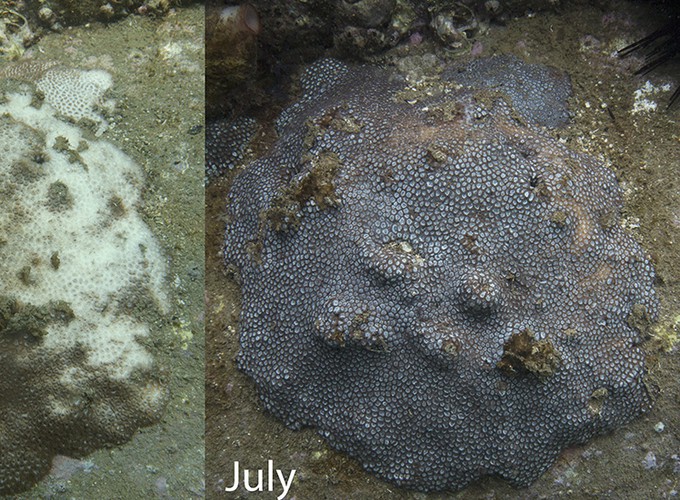Abstract
High-latitude coral communities are distinct from their tropical counterparts, and how they respond to recent heat wave events that have decimated tropical reefs remains unknown. In Australia, the 2016 El Niño resulted in the largest global mass coral bleaching event to date, reaching as far south as Sydney Harbour (~ 34°S). Coral bleaching was observed for the first time (affecting ca., 60% of all corals) as sea surface temperatures in Sydney Harbour remained > 2 °C above the long-term mean summer maxima, enabling us to examine whether high-latitude corals bleached in a manner described for tropical corals. Responses of the geographically cosmopolitan Plesiastrea versipora and southerly restricted Coscinaraea mcneilli were contrasted across two harbour sites, both in situ and among samples-maintained ex situ in aquaria continually supplied with Sydney Harbour seawater. While both coral taxa hosted the same species of microalgal endosymbiont (Breviolum spp; formerly clade B), only P. versipora bleached both in situ and ex situ via pronounced losses of endosymbiont cells. Both species displayed very different metabolic responses (growth, photosynthesis, respiration and calcification) and bleaching susceptibilities under elevated temperatures. Bacterial microbiome profiling, however, revealed a convergence of bacterial community composition across coral species throughout the bleaching. Corals species found in temperate regions, including the generalist P. versipora, will therefore likely be highly susceptible to future change as heat waves grow in frequency and severity unless their thermal thresholds increase. Our observations provide further evidence that high-latitude systems are susceptible to community reorganisation under climate change.
